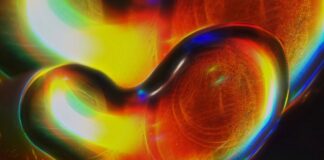The nasal septum is a vital anatomical structure that divides the nasal cavity into two symmetrical passages, known as nasal cavities or nostrils. Composed primarily of cartilage and bone, the nasal septum provides structural support to the nose and plays a crucial role in various physiological functions, including breathing, olfaction (sense of smell), and phonation (production of speech sounds). Throughout this detailed exploration, we will delve into the anatomy, development, functions, common disorders, and surgical procedures associated with the nasal septum, shedding light on its significance in overall nasal health and function.
The nasal septum serves as a central partition within the nose, separating the left and right nasal cavities. It extends from the nasal dorsum (roof of the nose) to the nasal floor, where it meets the hard palate of the mouth. The septum is composed of both cartilaginous and bony components, each contributing to its overall structure and stability. Anteriorly, the nasal septum is primarily cartilaginous, formed by the septal cartilage, while posteriorly, it becomes bony, consisting of the perpendicular plate of the ethmoid bone superiorly and the vomer bone inferiorly. Together, these structures create a firm and resilient partition that maintains the shape and integrity of the nasal cavity.
The nasal septum is crucial for maintaining proper nasal airflow and respiratory function. During inhalation, air enters the nasal passages through the nostrils and travels through the nasal cavities, where it is warmed, humidified, and filtered before reaching the lungs. The nasal septum helps to direct airflow evenly between the two nasal passages, ensuring efficient respiratory exchange and optimal oxygenation of the blood. Additionally, the nasal septum plays a role in regulating nasal airflow resistance, which can impact overall breathing comfort and function. Any deviation or obstruction of the nasal septum can disrupt airflow dynamics, leading to nasal congestion, difficulty breathing, and other respiratory symptoms.
Nasal septum, being a prominent anatomical structure, is prone to various disorders and abnormalities that can affect nasal function and health. One common condition is a deviated septum, in which the nasal septum is displaced or deviated from its normal position, typically as a result of trauma, congenital factors, or developmental abnormalities. A deviated septum can lead to nasal obstruction, difficulty breathing through one or both nostrils, recurrent sinus infections, and snoring. Other nasal septum disorders include septal perforation, in which there is a hole or opening in the septum, and septal deviation, where the septum is bent or curved to one side. These conditions can cause discomfort, nasal congestion, and in severe cases, compromise nasal function and quality of life.
Surgical intervention may be necessary to correct certain nasal septum disorders and restore nasal function and health. Nasal septoplasty is a common surgical procedure performed to straighten a deviated septum and improve airflow through the nasal passages. During septoplasty, the surgeon makes an incision inside the nose and removes or reshapes the deviated portion of the septum to realign it with the nasal midline. This procedure can alleviate symptoms of nasal obstruction, improve breathing, and reduce the risk of complications such as sinus infections and sleep disturbances. In cases of septal perforation or severe deformities, more extensive surgical techniques, such as septal reconstruction or grafting, may be required to repair the nasal septum and restore nasal function.
The nasal septum is a vital anatomical structure that plays a crucial role in nasal function and health. Composed of cartilage and bone, the nasal septum divides the nasal cavity into two symmetrical passages and provides structural support to the nose. It is essential for maintaining proper nasal airflow, respiratory function, and overall nasal health. Disorders of the nasal septum, such as deviated septum and septal perforation, can impact nasal function and quality of life, necessitating surgical intervention in some cases. Nasal septoplasty is a common surgical procedure used to correct a deviated septum and improve nasal breathing. Through understanding the anatomy, function, and disorders of the nasal septum, healthcare professionals can effectively diagnose and treat nasal conditions, promoting optimal nasal health and well-being.
The nasal septum, often referred to simply as “the septum,” is a crucial component of the nasal anatomy, contributing significantly to nasal airflow, respiratory function, and overall nasal health. Understanding the structure and function of the nasal septum is essential for healthcare professionals involved in the diagnosis and management of nasal conditions, as well as for individuals seeking relief from nasal symptoms and disorders.
The nasal septum is composed of both cartilaginous and bony components, each with its own distinct characteristics and functions. The anterior portion of the septum, which is located towards the front of the nose, is primarily made up of cartilage. This cartilaginous portion, known as the septal cartilage, provides flexibility and support to the nasal tip and helps maintain the shape of the nose. The posterior portion of the septum, situated towards the back of the nasal cavity, consists of bone. Specifically, the perpendicular plate of the ethmoid bone forms the superior aspect of the bony septum, while the vomer bone comprises the inferior aspect. These bony structures provide stability and structure to the nasal septum, anchoring it firmly in place within the nasal cavity.
In addition to its structural role, the nasal septum plays a vital role in regulating nasal airflow and maintaining respiratory function. During normal breathing, air enters the nasal passages through the nostrils and flows through the nasal cavities, where it is warmed, humidified, and filtered before reaching the lungs. The nasal septum helps to ensure efficient airflow between the two nasal passages, directing incoming air towards the nasal turbinates, which are bony structures within the nasal cavity that help to further filter, humidify, and condition the air. By providing a clear and unobstructed pathway for airflow, the nasal septum facilitates optimal respiratory exchange and oxygenation of the blood.
In addition to its role in respiration, the nasal septum also contributes to other important physiological functions, including olfaction (sense of smell) and phonation (production of speech sounds). The nasal septum houses the olfactory epithelium, a specialized tissue responsible for detecting and processing odors. When airborne molecules enter the nasal passages, they come into contact with the olfactory epithelium, where they are detected by olfactory receptors and transmitted to the brain for interpretation. The nasal septum also plays a role in speech production by serving as a resonating chamber and providing structural support to the nasal cavity and surrounding tissues.
Despite its essential functions, the nasal septum is susceptible to various disorders and abnormalities that can disrupt nasal function and health. One common disorder is a deviated septum, in which the nasal septum is displaced or deviated from its normal position. Deviated septum can result from trauma, congenital factors, or developmental abnormalities, and can lead to symptoms such as nasal congestion, difficulty breathing, and recurrent sinus infections. Other nasal septum disorders include septal perforation, in which there is a hole or opening in the septum, and septal deviation, where the septum is bent or curved to one side. These conditions can cause discomfort, nasal congestion, and in severe cases, compromise nasal function and quality of life.
In cases where nasal septum disorders cause significant symptoms or impair nasal function, surgical intervention may be necessary to correct the problem. Nasal septoplasty is a common surgical procedure used to straighten a deviated septum and improve airflow through the nasal passages. During septoplasty, the surgeon makes an incision inside the nose and removes or reshapes the deviated portion of the septum to realign it with the nasal midline. This procedure can alleviate symptoms of nasal obstruction, improve breathing, and reduce the risk of complications such as sinus infections and sleep disturbances. In cases of septal perforation or severe deformities, more extensive surgical techniques, such as septal reconstruction or grafting, may be required to repair the nasal septum and restore nasal function.
In conclusion, the nasal septum is a vital anatomical structure that plays a crucial role in nasal function and health. Composed of cartilage and bone, the nasal septum divides the nasal cavity into two symmetrical passages and provides structural support to the nose. It is essential for maintaining proper nasal airflow, respiratory function, and overall nasal health. Disorders of the nasal septum, such as deviated septum and septal perforation, can impact nasal function and quality of life, necessitating surgical intervention in some cases. Nasal septoplasty is a common surgical procedure used to correct a deviated septum and improve nasal breathing. Through understanding the anatomy, function, and disorders of the nasal septum, healthcare professionals can effectively diagnose and treat nasal conditions, promoting optimal nasal health and well-being.














